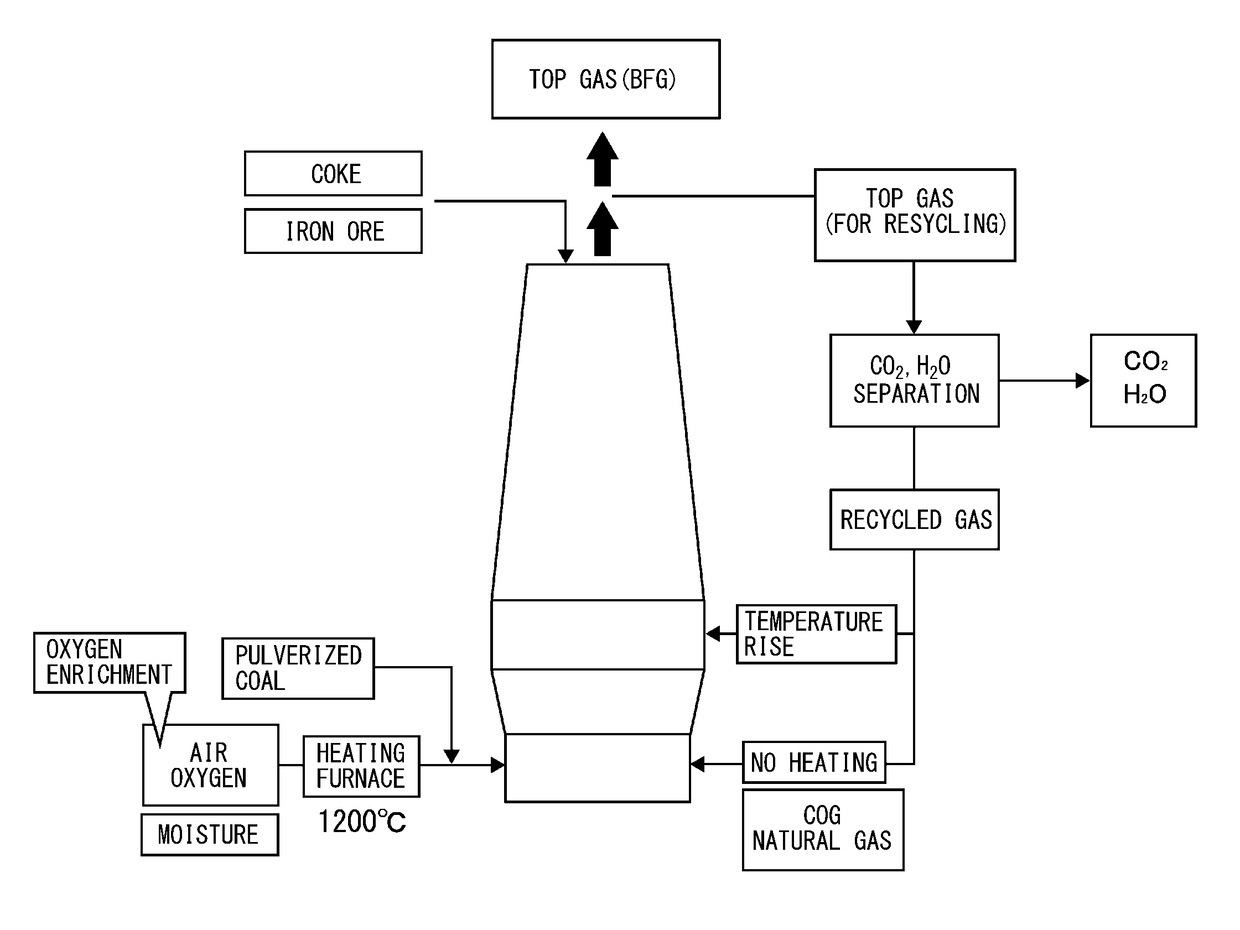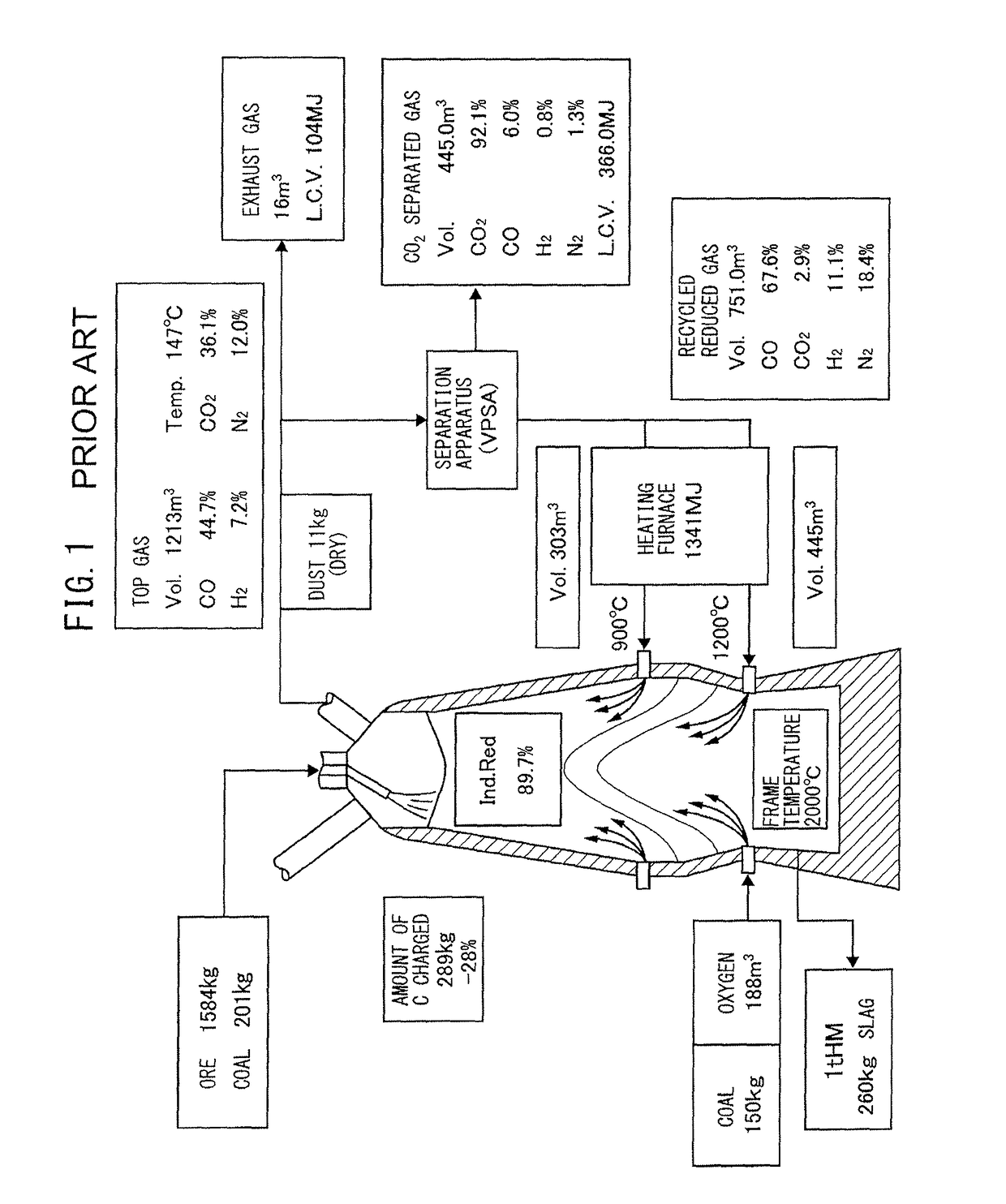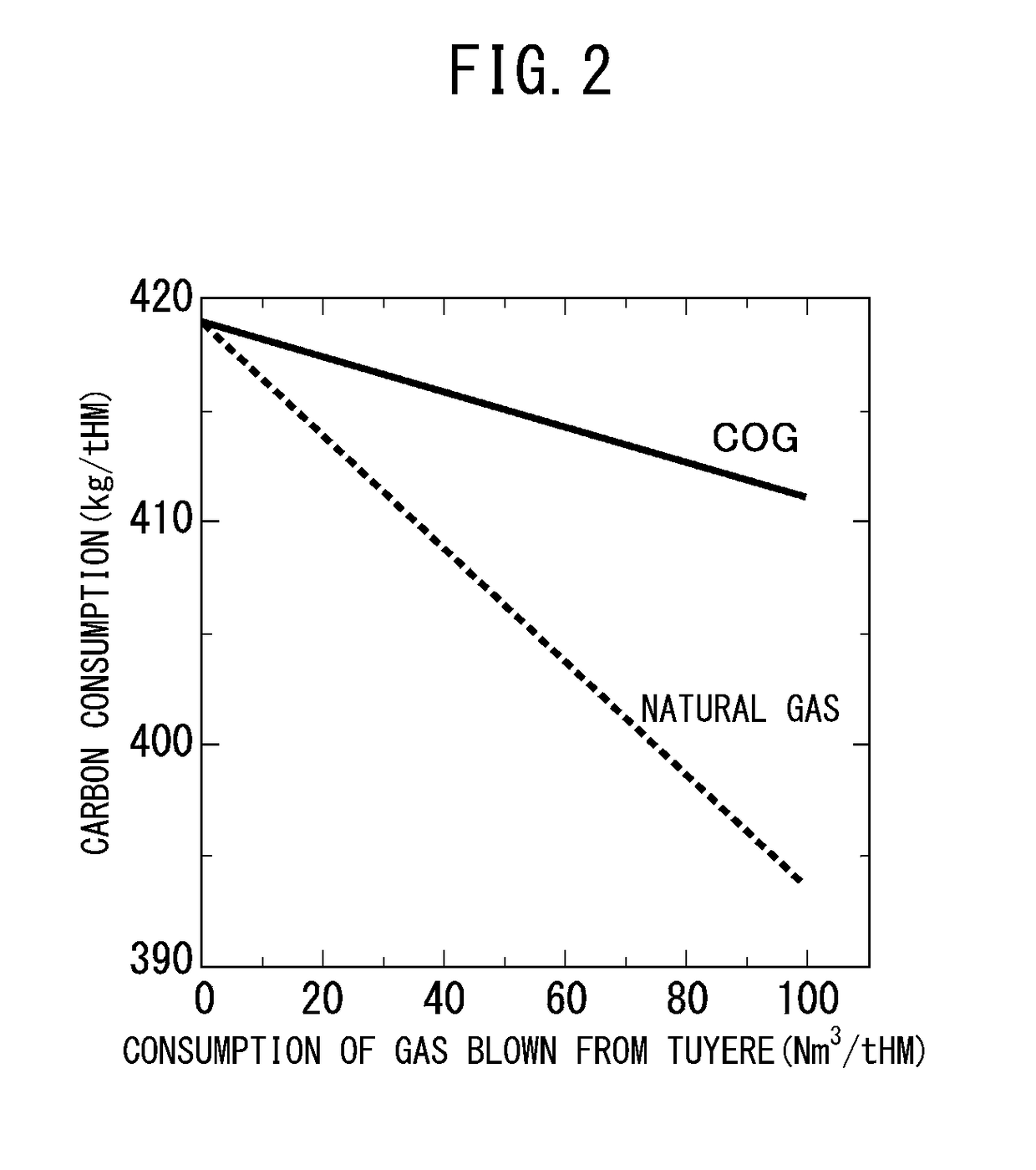Method for operation of blast furnace
a blast furnace and blast furnace technology, applied in the field of blast furnace operation, can solve the problems of not being able to fundamentally reduce not having the function to fundamentally cut the amount of co generation, and the features of commercial blast furnaces that pose serious risks, so as to reduce co2 emissions and produce hot metal stably over a long period
- Summary
- Abstract
- Description
- Claims
- Application Information
AI Technical Summary
Benefits of technology
Problems solved by technology
Method used
Image
Examples
example 1
[0043]In Example 1, first, the inventors investigated in detail the above Requirement A “blowing gas containing at least one of hydrogen and a hydrocarbon from a usual tuyere”.
[0044]Table 1 shows the standard parameters at the time of operation of the blast furnace (furnace volume 5300 m3) wherein pulverized coal is injected from the usual tuyere. Consider an operation of blowing CH4-containing gas with a high hydrogen content. If making CH4 rise in temperature to 800° C. or more, it breaks down under the heat whereby hydrogen gas is generated and the hydrogen gas functions as a reducing agent, so the effect of cutting the carbon consumption is obtained.
[0045]The CH4-containing gas contains not only hydrogen, but also a large amount of hydrogen in the state of CH4 or other hydrocarbons, so it is possible to provide it with the function of the reducing material. At this time, the CH4 concentration is preferably 25% or more. The reason is that if the CH4 concentration is less than 25%...
example 2
[0067]Next, the inventors studied the operation of a blast furnace further adding to the above (Requirement A+Requirement B) the Requirement C of “blowing top gas from the usual tuyere without heating and increasing the oxygen enrichment of blast”.
[0068]FIG. 6 shows the (Requirement A+Requirement B+Requirement C) process in brief. The Requirement C of the present invention further promotes the reduction of the carbon consumption (kg / tHM) under the (Requirement A+Requirement B). By combining the Requirement C, it is possible to maintain combustion conditions of the tuyere-front combustion location of the blast furnace at a suitable range and reach a coke rate at a level capable of actual operation by existing operating technology.
[0069]As explained above, the upper limit value of the oxygen enrichment is restricted by the presence of erosion of the lance and changes due to the composition of the blast gas. In the case of the present example of only blowing COG containing CH4: 37% fro...
example 3
[0076]FIG. 8 show the relationship among the operation indices of a blast furnace in the case of making natural gas consumption blown from the usual tuyere 95 (Nm3 / tHM) in the (Requirement A+Requirement B+Requirement C) process. Here, the operating conditions in the (Requirement A+Requirement B+Requirement C) process of FIG. 8 are shown in Table 6. Except for the blown gas changing from COG to natural gas, making the blowing rate of recycled gas from the shaft tuyere 400 Nm3 / tHM and making the blowing temperature 800° C., the conditions are the same as the conditions studied in Table 5.
[0077]
TABLE 6Blowing rate of natural gas95 Nm3 / tHM(usual tuyere)Blowing rate of recycled gas400 Nm3 / tHM(shaft tuyere)Blowing rate of recycled gasRate required for(usual tuyere)maintaining flametemperature at 2155° C.Blowing temperature of recycled800° C.gas (shaft tuyere)Blowing temperature of recycledOrdinary temperaturegas (usual tuyere)(25° C.)Oxygen enrichment15 to 40%(usual tuyere)
[0078]FIG. 8A s...
PUM
| Property | Measurement | Unit |
|---|---|---|
| temperature | aaaaa | aaaaa |
| grain size | aaaaa | aaaaa |
| grain size | aaaaa | aaaaa |
Abstract
Description
Claims
Application Information
 Login to View More
Login to View More - R&D
- Intellectual Property
- Life Sciences
- Materials
- Tech Scout
- Unparalleled Data Quality
- Higher Quality Content
- 60% Fewer Hallucinations
Browse by: Latest US Patents, China's latest patents, Technical Efficacy Thesaurus, Application Domain, Technology Topic, Popular Technical Reports.
© 2025 PatSnap. All rights reserved.Legal|Privacy policy|Modern Slavery Act Transparency Statement|Sitemap|About US| Contact US: help@patsnap.com



